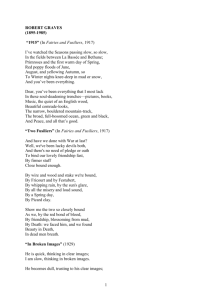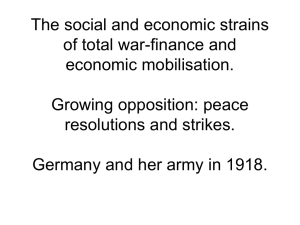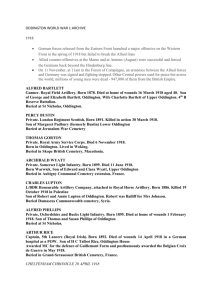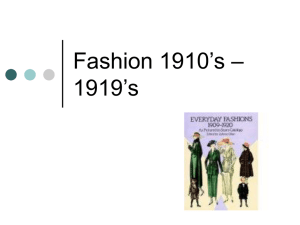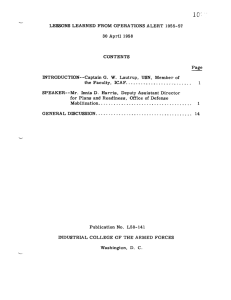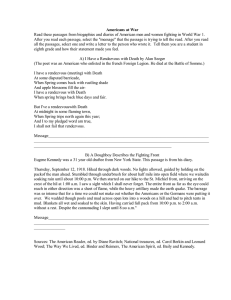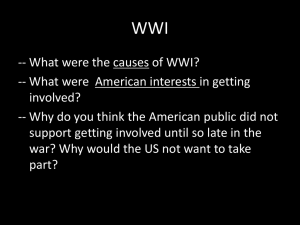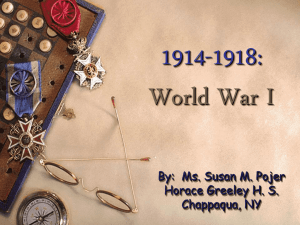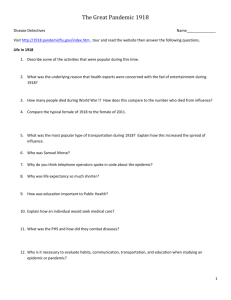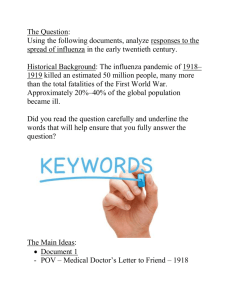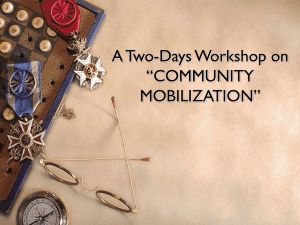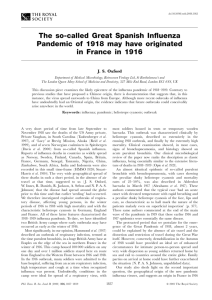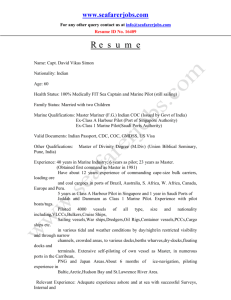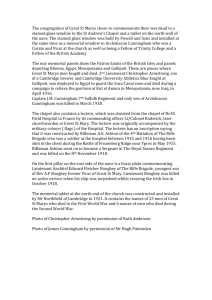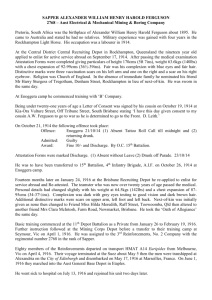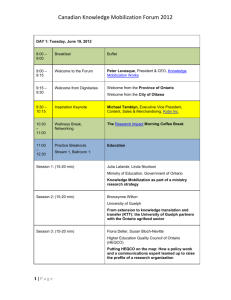American Power Tips the Balance
advertisement
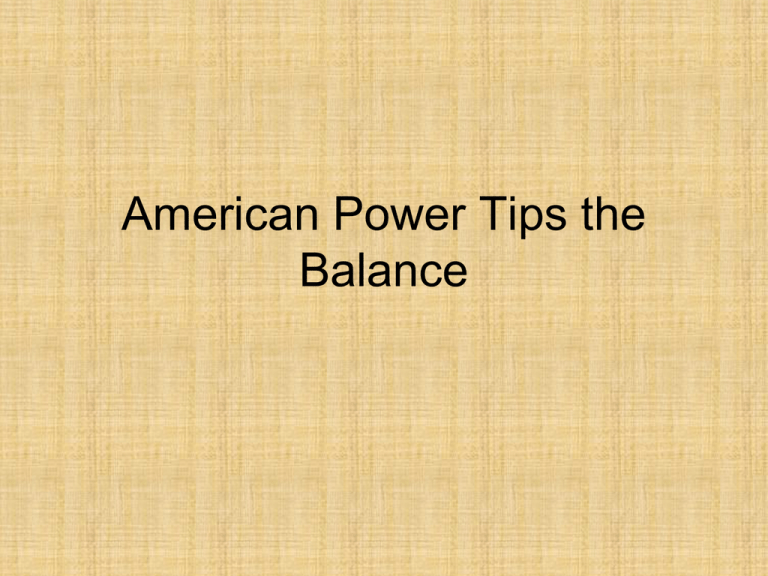
American Power Tips the Balance American Mobilization • Needed to build up armed forces • Only 200,000 soldiers • Old weapons • 55 small planes • 130 pilots Mobilization • Selective Service Act passed in May 1917 • 3 million drafted • 2 million reached Europe Mobilization • Women Served as nurses, secretaries and phone operators Mobilization • Blacks served in segregated units • Excluded from navy and marines • Army trained black officers for the 1st time American Success in Combat • Hard to get troops to Europe • BY 1917-U-Boats had sunk twice as much ship tonnage as the Allies built • U.S. began building more ships • Draft reduced number of skilled ship builders – Exempted shipyard workers from draft – Emphasized importance of shipyard work – Used fabrication – Converted civilian ships to war ships Breaking the Blockade • Convoy system • Submarine chasers • Airplanes A Submarine Chaser Breaking the Blockade • U.S. helped lay underwater mines in the North Sea • U-Boats no longer a threat by 1918 • U-Boats destroyedhard to replace Fighting in Europe • American troops were fresh Fighting in Europe • John J. PershingGeneral in charge of U.S. forces in Europe • Aggressive The Tide Turns • Russia out of War by 1918 • Germans now focusing on France • 50 miles from Paris by May 1918 The Tide Turns • By October 1918, the tide had turned against the Central Powers due to American help Weapons of WWI Big Bertha • Big Bertha • German • Could shoot a 1,800 pound shell 75 miles Zeppelins • Gas filled air ship • Enabled Germans to drop bombs on English cities • Easy to shoot down Machine Guns • 600 rounds/minute Poison Gas • First used in 1915 • Gas masks became standard equipment Victim of Poison Gas Mechanized Warfare • Warfare that relies on machines powered by gasoline or diesel engines Mechanized Warfare • Tanks- built from steel • Airplanes- flimsylimited to scouting at • Bullets bounce off first • First used by British in • Early gunfights 1916-Battle of the resembled duels Somme • Eventually got faster and able to carry heavier bombs WWI Airplanes Medical Care • Filth, lice, rats, polluted water • Stench of gas and decaying bodies • Suffered from lack of sleep • Shell shock Collapse of Germany • November 3, 1918German Grand Fleet ordered to sea • Sailors and marines refused • Mutiny spread • November 9-People of Berlin rebel • Proclaimed a German Republic • Kaiser abdicates • November 11, 1918 and 11AM-Fighting stops The numbers • 30 nations involved • 26 million dead-half civilians • 20 million wounded • Cost $350 billion

